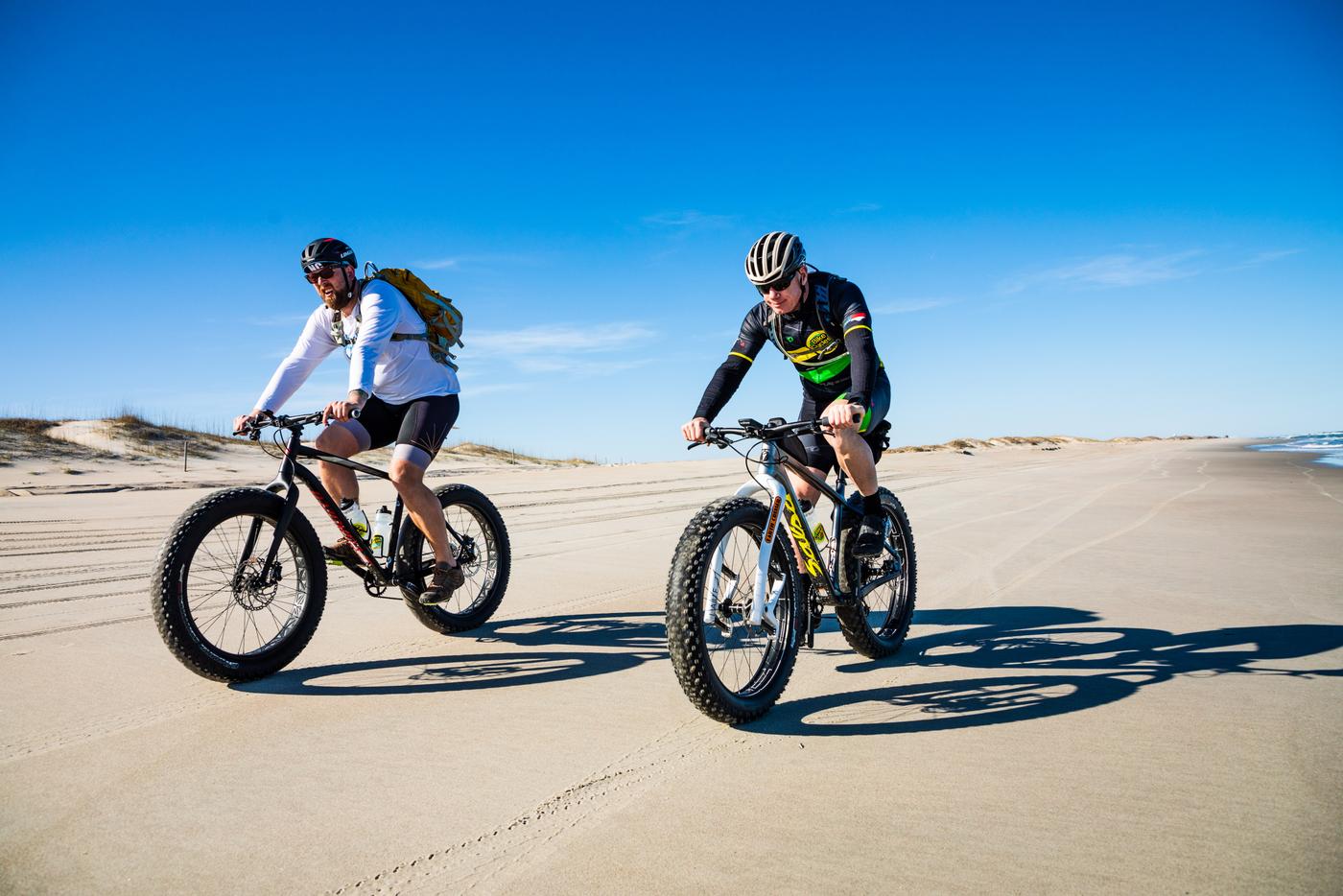


Have you ever wondered “Can You Ride A Mountain Bike On The Beach?” the answer is Certainly! Riding a mountain bike on the beach is thrilling, mixing the excitement of biking with the peaceful atmosphere of the shore.
You can use mountain bikes on certain parts of the beach. This allows for a unique ride by the sea. However, sand is not a suitable design for them.
Be careful when riding on the soft sand to have a safe and enjoyable bike trip. Adjust your riding technique accordingly before hitting the beach.
Biking on the Beach: Basics to Remember



“Beach cycling holds a special allure, where the rhythmic sound of crashing waves and the warm breeze on your face create a sense of freedom and adventure that can’t be replicated elsewhere. It’s a chance to connect with nature in a truly unique way.”
Biking on the beach can be tons of fun, but it’s not just like riding on a regular road. Here’s what you need to know before you pedal on the sandy beach:
The Sand Factor:
Riding on sand can be tough because it’s soft and keeps changing. It’s way different from riding on hard ground or a path. Be prepared for your bike to feel a bit wobbly.
Choose the Right Bike:
Using a mountain bike with wider tires works better on the beach. The broader tires help grip the sand and make it easier to move forward. It will be great to prefer a fat bike over other mountain bikes while beach riding.
Adjusting Your Riding Style:
When you’re on the beach, you might need to stand up more on your pedals and pedal more gently. This helps you maintain your balance and prevents you from getting stuck in the sand.
Stay Safe:
Just like on regular roads, it’s important to watch out for others. Check for people walking, playing, or sunbathing on the beach. Also, be aware of any obstacles like rocks or sticks that could get in your way.
Have Fun Exploring:
Riding on the beach can be a great way to enjoy the ocean breeze and the beautiful view. Take it slow, enjoy the moment, and remember to respect the beach and everyone around you.
So, if you’re planning to ride your mountain bike on the beach, keep these tips in mind. It’s a unique and exciting experience, but it’s crucial to stay safe and be considerate of others enjoying the beach too.
Essential Tips for a Smooth Ride
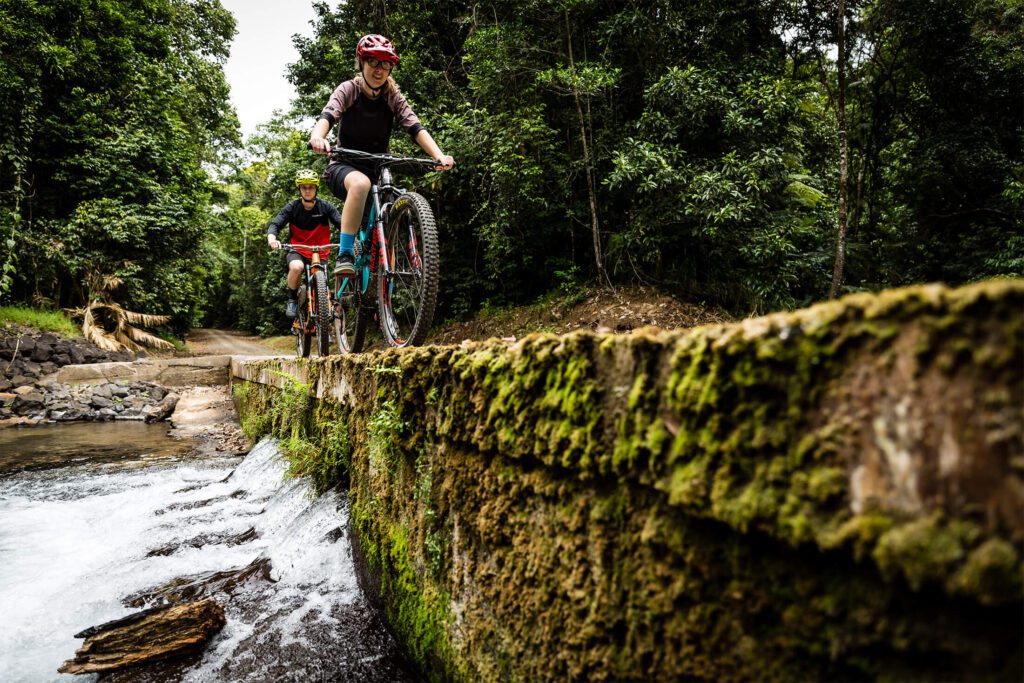


Biking on the beach is exciting, but it’s important to have tips for a fun and safe experience.
Choose the Right Bike:
Opt for a mountain bike with wider tires. These fat tires can handle the sandy surface better, giving you a smoother ride along the beach.
Adjust Your Speed:
Slow down and take it easy. Riding on sand is tricky. Go slowly to stay balanced and avoid slipping suddenly.
Maintain Control:
Keep a firm grip on your handlebars and be ready for some wobbling. Use both hands to steer your bike, especially when navigating through the softer sand patches.
Be Mindful of Others:
Watch out for people strolling on the beach or other bikers enjoying the view. Give other people a room so you can pass easily. Give a friendly warning or ring your bell to pass. This will let them know you’re coming.
Check the Tides:
Keep an eye on the tide schedule. It’s easier to ride on a beach with firmer, wet sand. Avoid riding at high tide when the sand might be softer and more challenging to pedal through.
Remember, beach biking is about enjoying the salty breeze and the stunning view. Follow these tips to ensure a delightful and safe ride on the picturesque shoreline.
Read More: ” Can Mountain Bike Be Used On Snow? “
Choosing the right mountain bike:
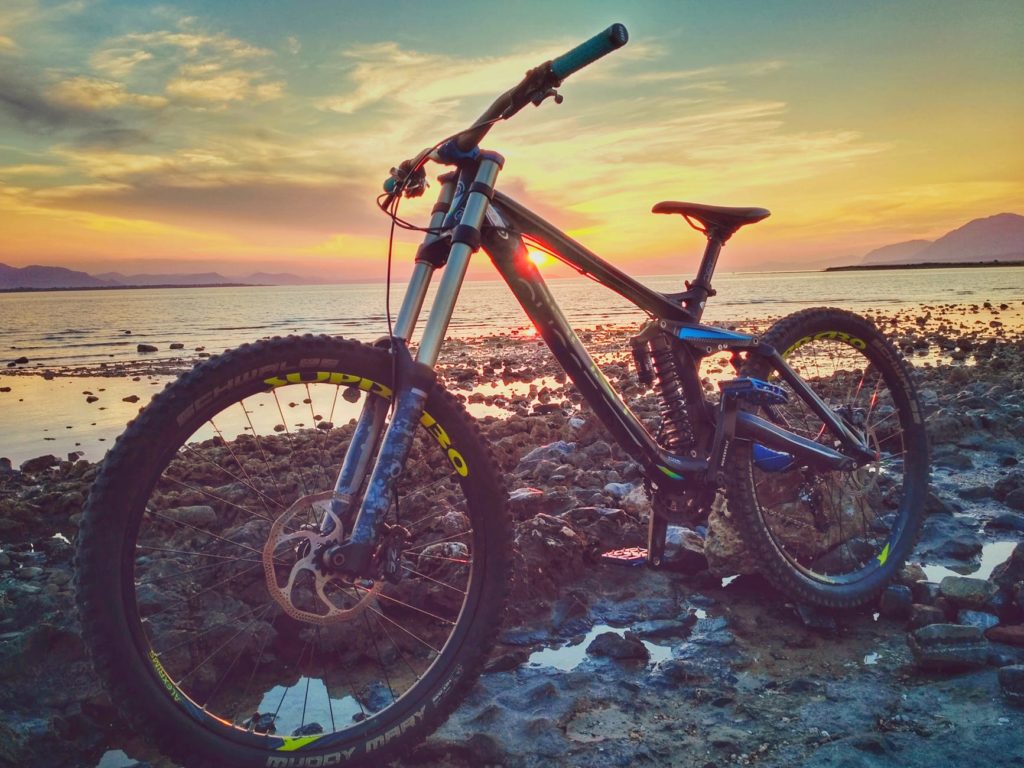


When it comes to beach riding, selecting the right mountain bike can significantly enhance your experience and performance on sandy terrain. While any mountain bike can handle some level of beach riding, certain features and specifications make certain bikes better suited for this unique environment.
Let’s explore these bike features and their importance for beach riding.
Tire selection:
One of the most crucial considerations for beach riding is tire choice. Wide, knobby tires with low tire pressure are ideal for navigating soft sand. These tires provide better traction and floatation, allowing you to glide smoothly over the surface.
Fat bikes, specifically designed for challenging terrains like sand, feature extra-wide tires that provide excellent stability and improved control.
Frame material and weight:
The frame material and weight of the mountain bike play a role in determining its performance on the beach. Lightweight frames, such as aluminum or carbon fiber, are preferred for their agility and maneuverability.
They make pedaling and handling easier, allowing you to navigate through the sand more efficiently.
Suspension:
While suspension is not as crucial on flat sandy beaches, it can still improve comfort and control on rougher sections or when encountering small obstacles like rocks or bumps. Front suspension forks help absorb impacts, providing a smoother ride and reducing strain on your body.
Drivetrain and gearing:
Beach riding often involves pedaling through challenging terrain, so having a bike with a suitable drivetrain and gearing system is essential. Bikes with a wide range of gears give you more options for adjusting your pedaling effort to match the conditions.
This versatility helps you maintain a consistent pace and conquer inclines or headwinds with ease.
Corrosion-resistant components:
Beach riding exposes your bike to saltwater and sand, which can accelerate corrosion and damage to components. Opting for bikes with corrosion-resistant materials, such as stainless steel or titanium, can help prolong the lifespan of your bike and reduce maintenance requirements.
Choosing a mountain bike with these features tailored to beach riding can greatly improve your performance and enjoyment on the sand. While any mountain bike can handle some beach riding, investing in a bike specifically designed for these conditions ensures optimal performance, stability, and comfort.
Read More: ” Can You Ride A Mountain Bike On Pavement? “
Getting Your Bike Ready for the Beach Ride



Before hitting the sandy shores with your mountain bike, it’s crucial to make sure your bike is beach-ready. Here are some simple tips to get your bike prepared for the beach ride:
Clean Your Bike:
Start by giving your bike a good clean to remove any dirt or debris, especially from the chain, gears, and brakes. This helps things work smoothly and stops any extra damage from happening. Please make sure to clean your bike after beach riding.
Check Your Tires:
Make sure your tires are in good condition and properly inflated. Use wider tires with good treads for better grip on sand, making your ride more stable and fun.
Protect Your Bike:
Apply a layer of protective lubricant to the exposed metal parts, such as the chain and gears, to prevent corrosion from the salt water and sand, ensuring your bike stays in top shape even after the beach ride.
Adjust Your Gears:
Fine-tune your gear settings to accommodate the sandy surface. Choose a lower gear to make pedaling on soft sand easier and your beach ride more enjoyable.
Carry Essentials:
Bring essential tools like a small pump and a repair kit in case of unexpected problems while cycling. Bring water and a towel to stay hydrated and clean your bike from sand.
Follow these tips to prepare your mountain bike for a fun beach ride. This will help you have a great time and make the most of your seaside adventure.
Read More: ” Is Mountain Bike Good For Beginners? “
Mastering the Beach Ride: Tips for Biking on Sand
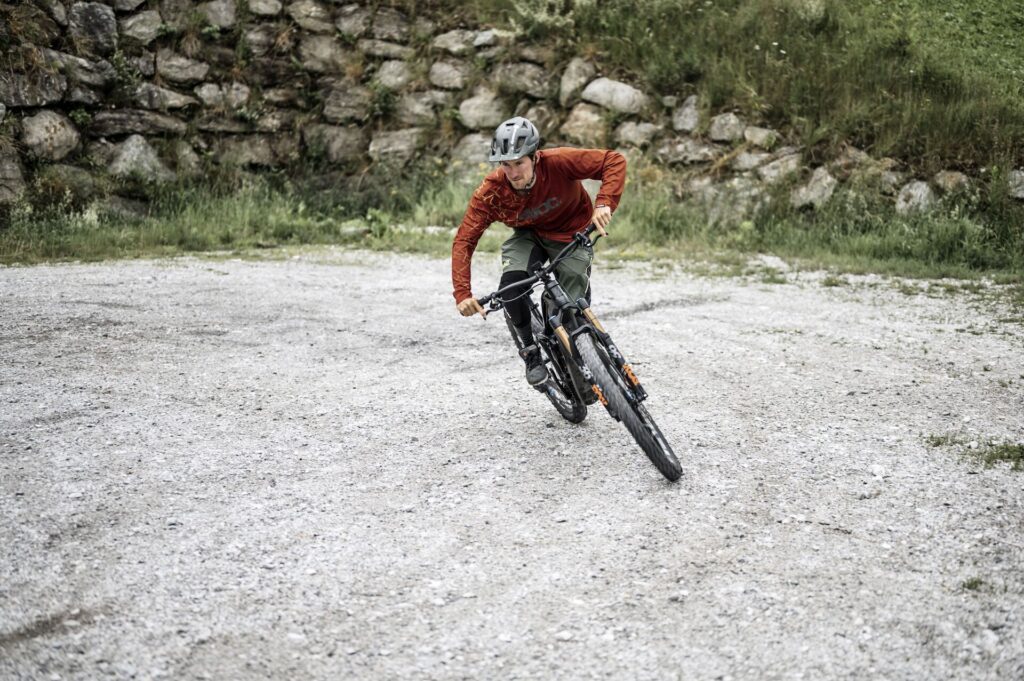


Biking on sandy terrain can be tricky, but with some simple adjustments, you can conquer the challenge and enjoy the adventure:
Finding Your Balance:
When biking on sand, it’s essential to maintain a steady balance. Try to shift your weight evenly on the bike and avoid sudden movements that might throw you off track.
Pedal Smoothly:
Instead of putting too much pressure on your pedals, pedal gently and consistently. This approach helps prevent your tires from sinking too deep into the sand, making your ride smoother.
Standing Up at Times:
When the sand gets softer, it’s helpful to stand up on your pedals to gain more control. This way, you can use your body weight to navigate through the challenging patches.
Braking Carefully:
Braking on sand needs a different way of doing it. Apply your brakes gently and evenly to avoid skidding or sharp turns. Remember that it might take a bit longer to stop on sandy terrain compared to a regular path.
Practice Makes Perfect:
The more you bike on the sand, the more you’ll get the hang of it. Don’t let it get you down if it seems tough at first. With practice, you’ll develop the right techniques to handle the sandy terrain like a pro.
Embrace the thrill of biking on sandy terrain by including these simple tips into your riding technique. With a bit of practice and patience, you’ll soon find yourself smoothly gliding through the beautiful beach landscape.
Read More: ” Is Mountain Biking Safe? “
Safety Measures for Beach Cycling



Before you head out for a thrilling bike ride on the beach, it’s important to keep these safety tips in mind:
Wear Your Helmet:
Always wear a helmet to protect your head in case of any unexpected falls or collisions. A helmet is your best friend for a safe biking experience.
Check Your Bike:
Before hitting the sandy shores, ensure your bike is in good shape. Make sure to check the brakes, tire pressure, and how stable everything is to avoid any problems during your ride.
Observe the Surroundings:
Keep an eye out for others around you. Look for people walking, playing, or relaxing on the beach. Be sure to give them enough space and be prepared to slow down if needed.
Stay Hydrated:
Biking on the beach can be quite a workout, so make sure to carry water with you. It’s important to drink enough water to stay energized and avoid getting dehydrated.
Sun Protection:
Don’t forget to apply sunscreen before your ride and consider wearing sunglasses to shield your eyes from the sun’s glare. Protecting your skin and eyes is vital, especially during long rides under the sun.
Follow these safety precautions for a safe and fun bike ride, protecting yourself from any dangers along the way.
Pros and Cons of Beach Riding
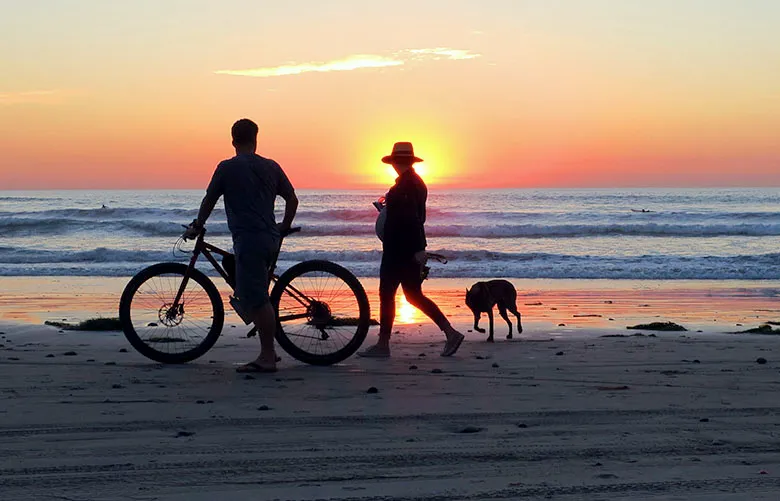


Riding a bike on the beach is thrilling, but it has its benefits and difficulties. Here’s a breakdown of the pros and cons to consider before embarking on your beach biking journey:
Pros:
Scenic Views:
Biking by the beach gives beautiful views of the ocean and shoreline, creating a peaceful and scenic background for your ride.
Refreshing Experience:
The sea breeze and sound of waves can make biking feel refreshing, giving a peaceful feeling.
Unique Adventure:
Biking on the beach lets you reach places not reachable on foot so that you can find hidden treasures along the coast.
Cons:
Challenging Terrain:
Cycling on sand is tough, needing more effort and energy than on solid ground, which can make you tired faster.
Handling Difficulty:
Sand’s unsteadiness makes it hard to ride a bike, especially for beginners, as it affects control and makes maneuvering challenging.
Maintenance Concerns:
Sand and saltwater can damage bikes, so they may need more maintenance to work well.
Considering these pros and cons can help you make an informed decision about whether riding a mountain bike on the beach is the right choice for your next biking adventure.
Final Words (Can You Ride A Mountain Bike On The Beach)
Riding a mountain bike on the beach is exciting and beautiful, but it has its challenges. The beautiful views and refreshing experience make it tempting, but the tricky terrain and potential maintenance issues need to be considered.
Biking on the beach can be a thrilling challenge if you’re ready and don’t mind putting in extra effort. It can also be an enjoyable and memorable experience. Just be prepared for the sand and make sure to take good care of your bike afterward. Enjoy your beach biking adventure!
FAQs:
Is it OK to ride a bike on the beach?
Yes, it is possible to ride a bike on the beach. However, it is important to consider the terrain, follow any local regulations, and practice beach riding etiquette for a safe and enjoyable experience.
What is the bike on the beach called?
A bike specifically designed for riding on the beach is commonly referred to as a “beach cruiser” or a “beach bike.” These bikes typically have wide tires and a relaxed riding position for comfortable beach riding.
What bike is best for beach sand?
A fat bike is considered the best bike for riding on beach sand due to its wide tires, low tire pressure, and increased traction, which help navigate through sandy terrains more easily.
Will sand damage my bike?
Exposure to sand can potentially cause damage to your bike, including increased wear on components, increased friction, and potential issues with shifting and braking mechanisms.
How do I keep my bike from rusting at the beach?
To prevent rust on your bike at the beach, rinse it with fresh water after every ride, dry it thoroughly, apply a protective coating or wax, and store it in a dry area away from saltwater and moisture.



Welcome to Bikegenics, where passion meets performance! We are a leading online destination for all things related to mountain biking, dedicated to providing you with top-notch gear, expert advice, and an immersive community to fuel your two-wheeled adventures. With a commitment to excellence and a deep love for the sport, we strive to elevate your biking experience to new heights.
